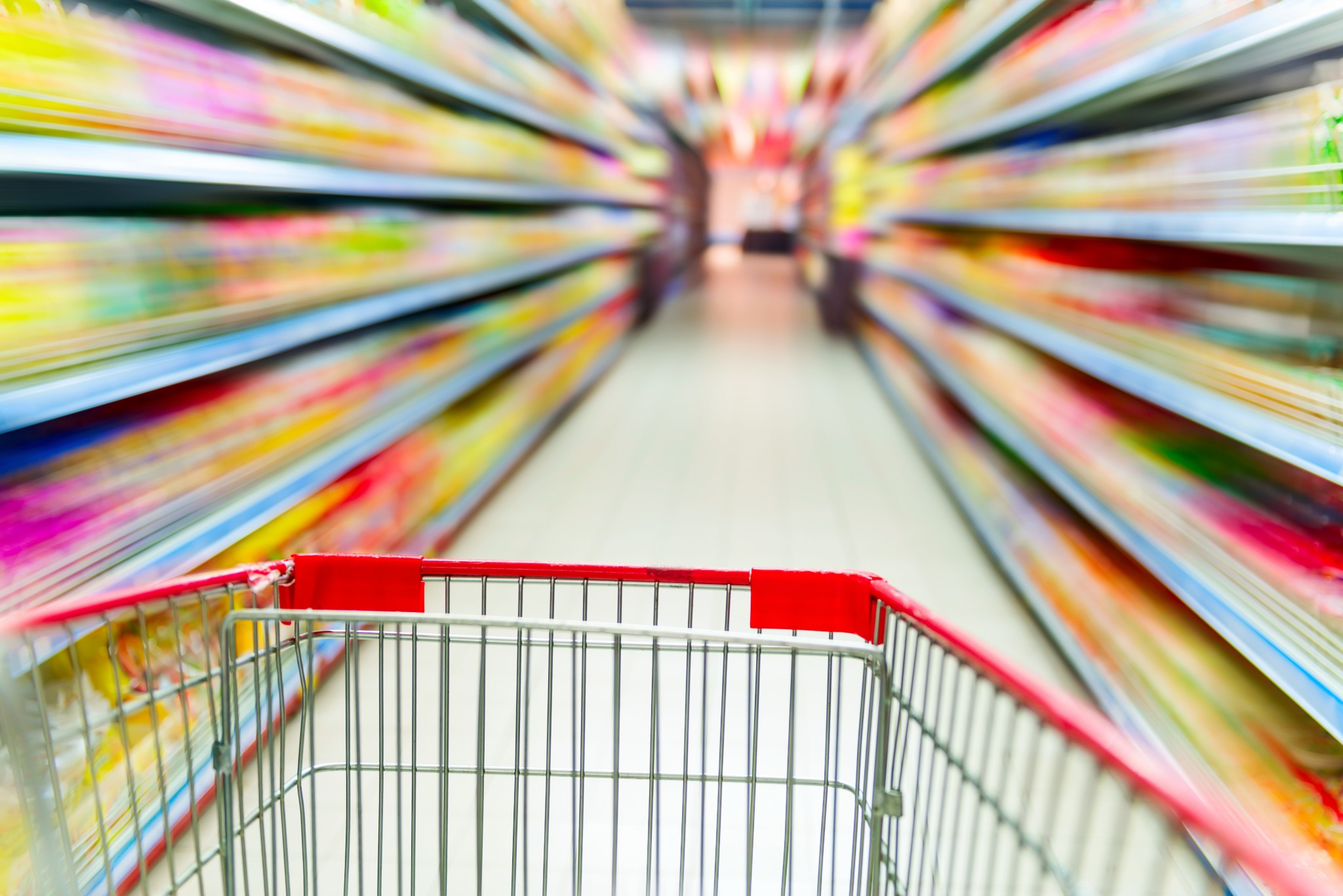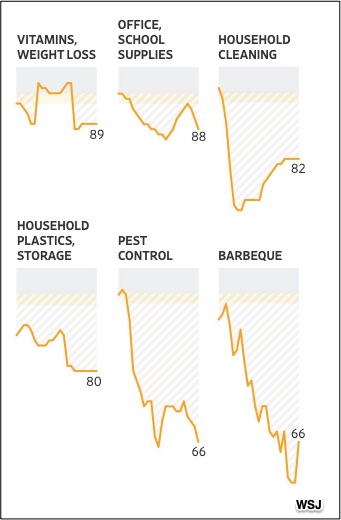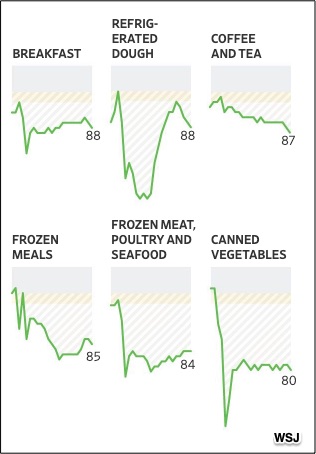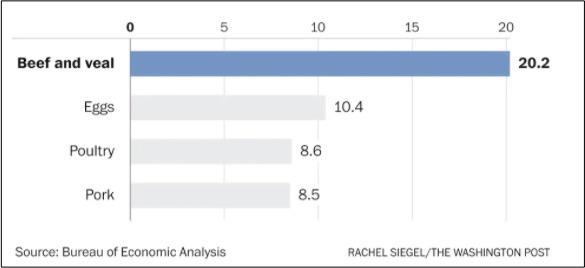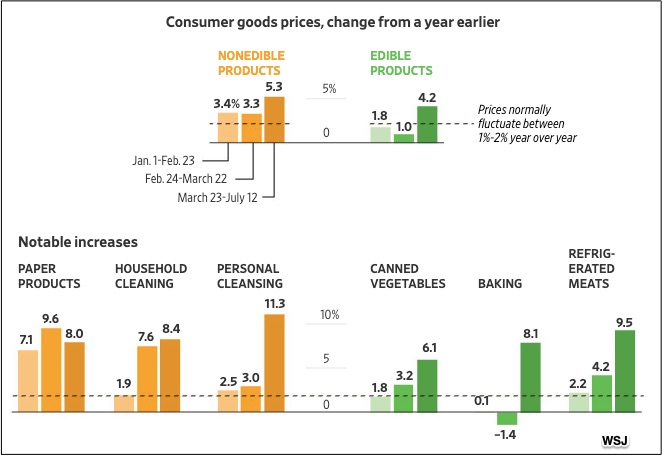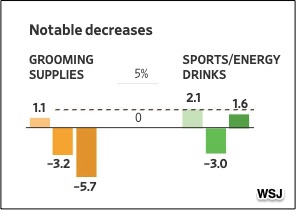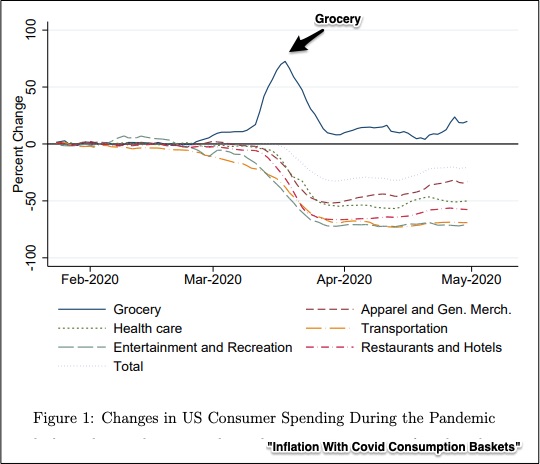If your shopping list has 20 items, it is likely that 2 will be unavailable, many will be more expensive, and milk could be cheaper.
As our yardstick of prices, the CPI does not reveal all that is happening at the supermarket.
Grocery Prices
Availability
Shown below by numbers that display weekly stock availability, some non-edibles are harder to find. The barbecue graph represents the tools:
Some edibles are also less available:
Prices
Correspondingly, the prices of some items are up considerably. Beef and veal are up a whopping 20 percent:
Because of the pandemic, those price increases have averaged 5 percent. Last year, we were looking at approximately a 2 percent rise:
The following price decreases pretty much reflected what we were not doing. Staying at home, we did not need the grooming goods that made us smell good and look attractive. Also, we were not buying sports drinks for the gym:
Our Bottom Line: Covid Baskets
Involving something like 80,000 goods and services in eight big categories including apparel, transportation, and medical care, an urban consumer’s CPI is created by the BLS (Bureau of Labor Statistics).
In a new NBER paper, Harvard economist Alberto Cavallo expressed concern with recent CPI statistics. He suggests that statisticians need to re-weight certain items because consumers are spending more on stay-at-home goods like food and less on their away services like grooming supplies and sports drinks. In other words, traditional formulas don’t work during a pandemic.
In what he calls his “Covid Basket,” Dr. Cavallo shows a daily measure of our consumption patterns. His prices are from the Opportunity Insights Tracker (OI):
You can see the surge in grocery spending, a surge that he believes should change the calculation of the CPI. Oversimplifying a bit, we can just say that when the share of total expenditures for an item changes, so too should the CPI.
But it didn’t.
Consequently, the CPI is hiding higher prices and their impact. The Urban Institute estimates that one in every six people is experiencing the food insecurity that means they cannot afford a nutritional food basket. The numbers range from approximately 27 percent of all Black and Hispanic adults’ households to 13.5 percent for white adults’ households.
My sources and more: The Washington Post, CNN, and WSJ each looked at rising grocery prices as did a recent CPI news release. In addition, Marginal Revolution alerted me to the Cavallo NBER paper. Finally, this Urban Institute report on food security provides insight about why stimulus payments from Congress have been crucial. Please note that our paragraph on Dr. Cavallo is similar to what we have previously posted.

